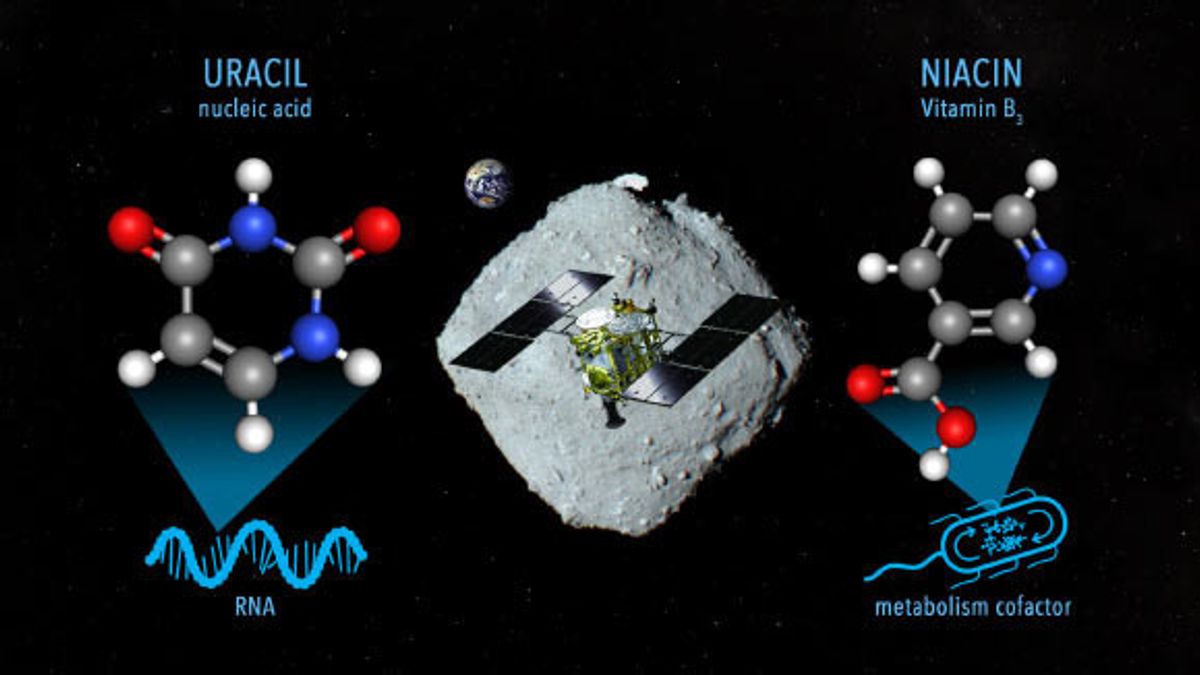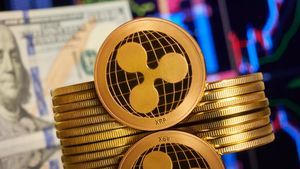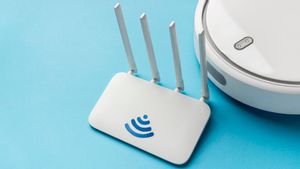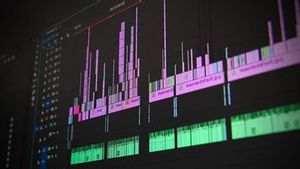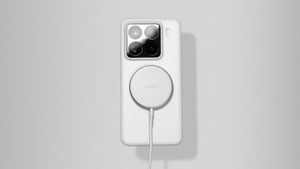JAKARTA - Scientists recently discovered Niasin, known as vitamin B3, and Urasil, one of the four components of the ribonucleic acid (RNA) core contained in the asteroid Ryugu.
Ryugu is a diamond-shaped carbon-rich asteroid, he was discovered in May 1999 by astronomers with Lincoln Near-Earth Asteroid Research.
Also known as 1999 JU3, this asteroid is about 900 m (0.56 miles) in diameter and orbits the Sun at a distance of 0.96-1.41 astronomical units once every 474 days.
The sample return mission to Ryugu was launched on December 3, 2014 and arrived on the asteroid on June 27, 2018 using Hayabusa-2 belonging to the Japan Space Agency (JAXA).
There, the spacecraft deployed explorers and landers to the surface of Ryugu, and collected samples from near the surface.
Two samples were taken, one from the ground surface, and the other from inside the asteroid. To get a deep sample, the spacecraft fired a larger projectile at Ryugu to form a crater, then sampled it from the crater floor.
On December 6, 2020, a total of 5.4 grams of pure samples were returned to Earth in a tightly closed sample container inside a re-entry capsule.
Since then scientists have had the opportunity to study the sample, and announced last week the asteroid contained organic molecules that are important to life.
The findings were published last Tuesday in the journal Nature Communications. Niasin explained, usually found in foods such as nuts, seeds, pods, and meat, helps the human body build fat and generate energy from nutrients. The content also plays a role in improving human DNA.
Urasil, as one of the ingredients of RNA compilers, also plays an important function in the human body. This brings instructions from DNA, contained in the human cell core, to the ribosome cells, where proteins are made.
Similar molecules have been found in space objects before, but the pure condition of the samples Hayabusa-2 carried makes the evidence much more convincing.
Scientists have previously found nucleobuses and vitamins in certain carbon-rich meteorites, but there are always questions about contamination due to exposure to the Earth's environment, said Associate Professor at Hokkaido University, who led the study, Yasuhiro Oba.
"Because the Hayabusa-2 spacecraft collects two samples directly from the asteroid Ryugu and sends them to Earth in a closed capsule, contamination can be removed," he added.
Urasil is found in surface and subsurface samples, although more common below the surface. In other words, ultraviolet photons and cosmic rays may have caused Urasil on the surface of the asteroid to begin to rot, as quoted from Universe Today, Tuesday, March 28.
The researchers stated that organic molecules in surface materials would undergo a wider energy process than materials below the surface, which could potentially lead to preferential degradation of molecules on the surface.
Other organic molecules found in the sample include amino acids, amina, and carboxylate acids. The researchers compared Ryugu samples with previously studied meteorites, especially Orgueil meteorites, which fell to Earth in southern France in 1864.
The resemblance is striking, although not identical, and suggests the meteorite comes from a similar type-C asteroid.
The study of carbon chondrite meteorites such as Orgueil samples, and asteroid Ryugu, helps unite how the building blocks of life end on Earth. Vitamin B3, Urasil, and other organic molecules are found elsewhere in the Solar System, and have existed for a long time.
"The discovery of drains in samples from Ryugu reinforces recent theories regarding the source of nucleobase on ancient Earth," explained Oba.
NASA's OSIRIS-REx mission will return samples from asteroid Bennu this year, and a comparative study of the composition of these asteroids will provide further data to build on these theories, he added.
The English, Chinese, Japanese, Arabic, and French versions are automatically generated by the AI. So there may still be inaccuracies in translating, please always see Indonesian as our main language. (system supported by DigitalSiber.id)
